Roses need consistent attention to thrive, and that includes regular watering. But what does “regular” watering actually mean? The answer depends on a variety of factors. Let’s break things down so you’ll know when and how to water the roses in your collection so they will yield the biggest, brightest, and most beautiful blooms possible.
Why Water?
Water is essential for nutrient delivery throughout the plant. It moves upward through the canes to deliver nutrients for new stems and flowers to grow. It also moves downward to strengthen the root system of the plant. Roses lose water through their leaves (transpiration). When a plant is under-watered, it loses more water than it takes in. This results in wilted flowers and leaves. On the other hand, if the plant is overwatered, the roots will be starved of oxygen and the plant essentially drowns. The leaves will turn yellow and begin to drop from the plant.
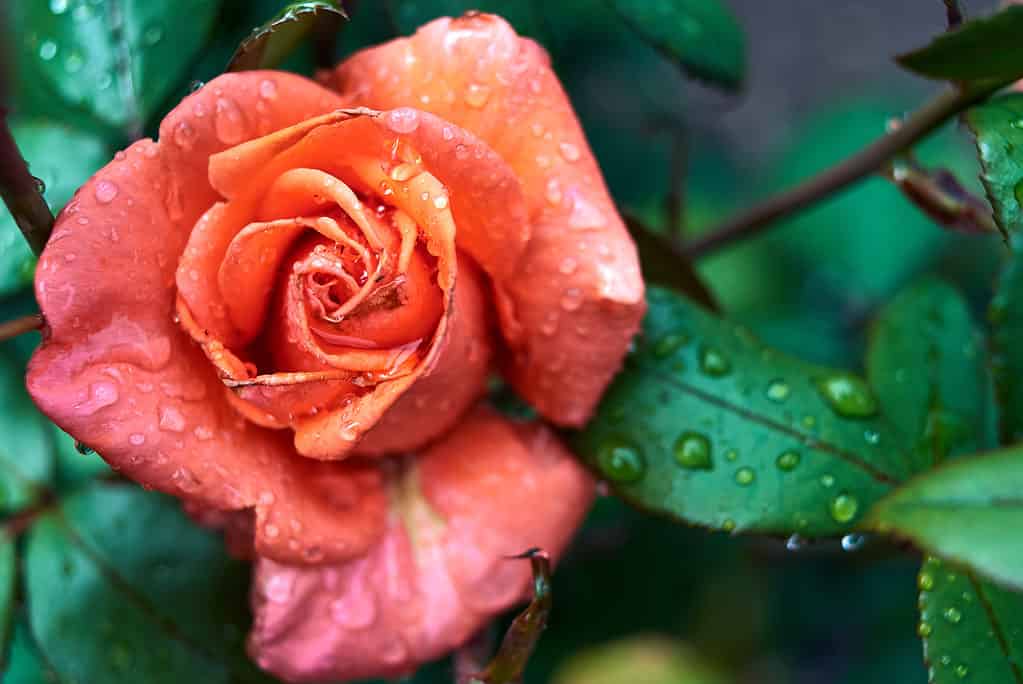
Water delivers the nutrients required for healthy roses.
©Mirage_studio/Shutterstock.com
How do gardeners make sure their roses are receiving the right amount of moisture? Here are some guidelines to keep your roses properly hydrated.
When to Water
The watering needs of roses vary throughout the year.
New roses need to be watered every couple of days in the spring and summer. Well-established roses usually need watering twice a week. In dry spells or periods of extreme heat, watering needs to increase.
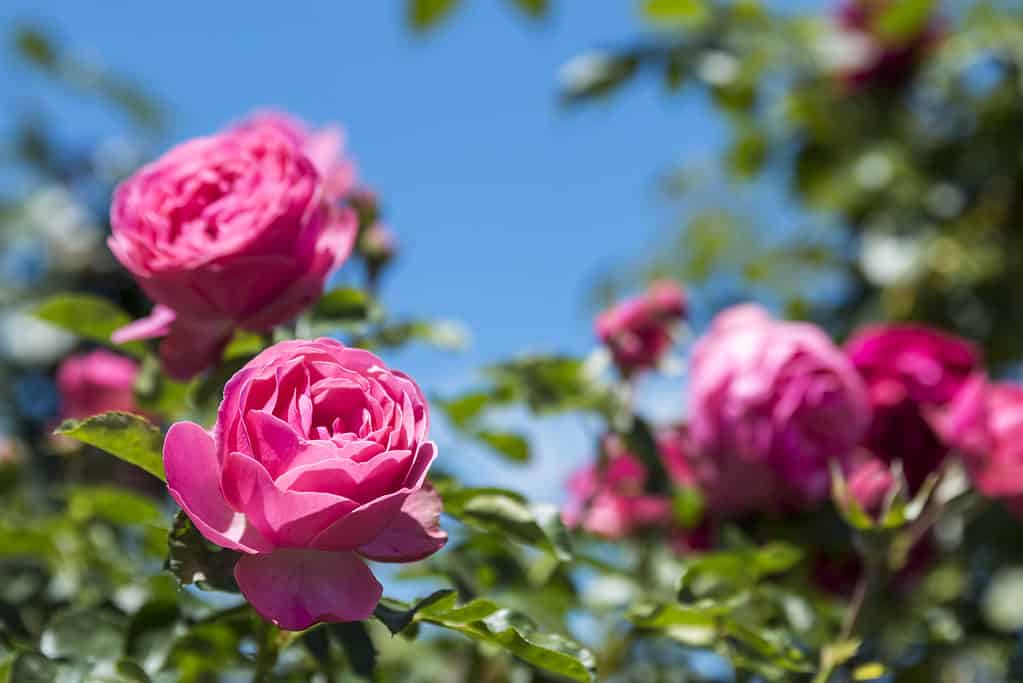
Warm summer days mean roses will need additional watering.
©iStock.com/Krasimir Kanchev
In the fall and winter, water your roses when the ground seems dry. Continue until the plant goes into winter dormancy.
Adding an inch or two of mulch around the base of the plant will help the soil retain moisture. This is especially important in hotter, drier climates. Organic mulch provides even more benefits. It slowly releases nutrients into the soil as it breaks down through the growing season.
Amount of Water
You’ll want to ensure the soil around your roses remains moist and that the moisture extends at least 16 inches down into the ground. A deep soaking every few days is much better than lighter daily watering. Surface-level watering can potentially do more harm than good because it encourages shallow root growth. The roots of the plant are going to follow the water. If the water is shallow, the roots will be shallow. A shallow root system will create all manner of problems in the future for your roses.

Roses need deep watering that extends down to the roots.
©photoPOU/Shutterstock.com
The only way to be certain the water is reaching the necessary depth of 16 inches is to test it. Water your roses for a set period of time, then dig down near the roots. Test how deep the moisture goes. If it doesn’t extend down a full 16 inches, add some more water while keeping track of the time. Once you figure out how much watering time is required to reach the proper depths, you’ll have a good gauge for the watering duration that is needed as you move forward. The bottom line, it will probably take longer than you think it should. Be patient!
Since roses require copious amounts of water, it is best to give them their own space. If roses are planted alongside other plants, those plants may experience root rot due to the amount of water needed for the roses to thrive. Either that or the roses will be starved for water while the other plants thrive. It’s a lose-lose scenario either way, so plan to separate your roses from other plants that require significantly less water.
How to Water
Simply dumping a few gallons of water on your roses won’t be very helpful, as most of it will be lost to runoff. And using the jet stream on your garden hose nozzle can also be detrimental since it will likely wash away soil and mulch from the plant’s base.
A slower, more methodical watering method is preferred. It will take longer and require more patience, but it will ensure that your roses receive the water they need.
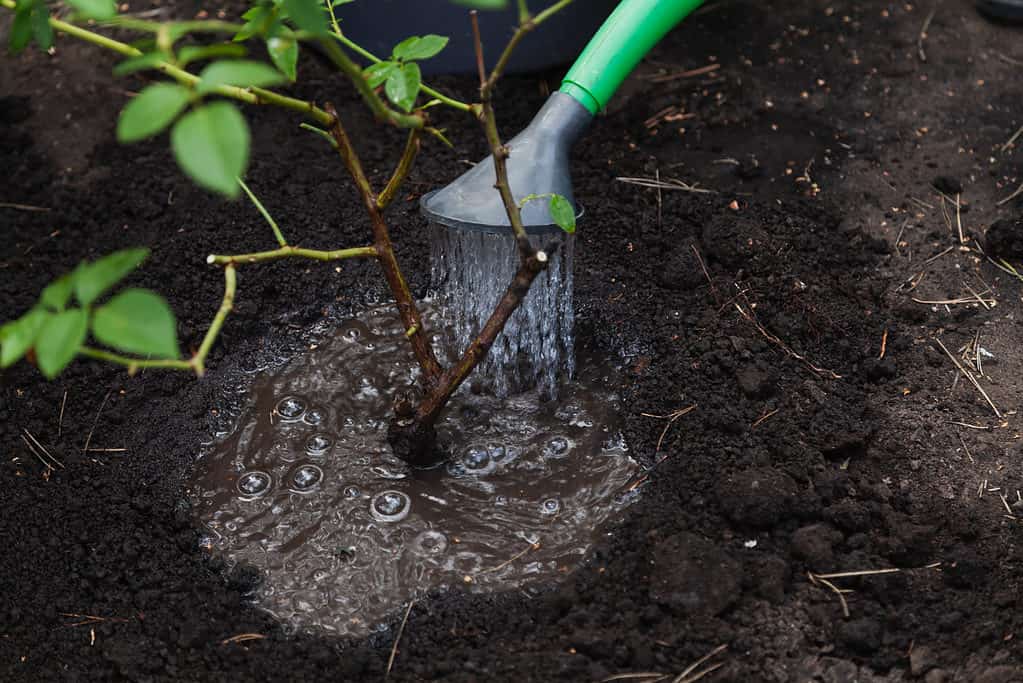
Water should be applied directly to the base of the plant.
©iStock.com/glebchik
It’s best to direct the water to the base of the plant for maximum absorption. It’s also preferable to water roses early in the morning, rather than in the heat of the day. Watering in the evening is okay, but the moisture may remain on the foliage overnight. This can invite disease, so evening watering should be done sparingly.
Watering Applications
You can use a drip irrigation system that will slowly water your plants with little to no runoff.
If you will be hand-watering your roses, a bubbler attachment for your garden hose is a great option. It gently delivers water without eroding the soil or losing water to runoff.
Of course, a traditional watering can is also an effective method. A can with a shower-type nozzle will deliver a slow, deep soaking. Pour out the water slowly. If you notice runoff, stop watering and allow the soil to absorb the water it has received. Once the water soaks into the soil, continue watering. It will take a while and multiple cans of water will be required, so patience is key.
Regardless of your chosen watering method, it’s a good idea to use a shower setting on your garden hose to spray the entire plant once a week or so. This spray can remove pests such as spider mites that often go unseen on the underside of the leaves. Again, do this in the morning so the foliage can fully dry before nightfall.
Feeding While Watering
Along with consistent watering, roses require occasional feeding to reach their full potential. There is a range of organic and synthetic options that will give your roses a boost
If you choose a synthetic fertilizer, use one that is specific to roses. That ensures that the fertilizer will contain the appropriate levels of nitrogen, potassium, and phosphorus, along with other trace elements that will benefit your roses. Synthetics are usually less expensive than organic mixes.
If you prefer an organic fertilizer, there are plenty of commercially available options. Organic mixes contain the needed nutrients mentioned above, but they are also better for the environment and promote longer-term soil health than synthetics.
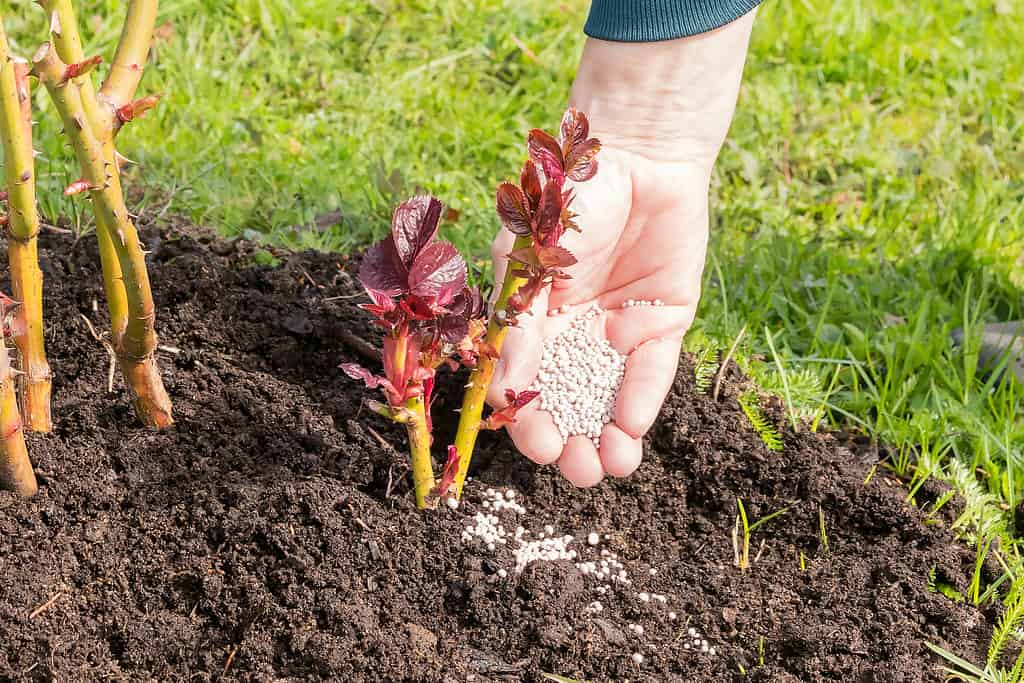
Along with watering, roses benefit from occasional feedings throughout the growing season.
©iStock.com/Ludmila Kapustkina
You can also add other organic amendments to give your roses a proverbial shot in the arm. For example, Epsom salts promote brighter blooms and greener foliage when applied in the spring.
After you enjoy your shot of espresso, coffee grounds can be used to give your roses an extra shot of nitrogen.
Bone meal can be added in the spring. It will provide a slow release of nutrients throughout the growing season. You can also add bone meal in the fall to strengthen the roots and give the plant some extra nutrients that will jumpstart it in the spring.
A one-inch layer of manure in the spring can add much-needed nutrients to the soil. Make sure the manure has aged so it doesn’t burn the plants. Also, aged manure is less odorous. Your neighbors and your roses will both appreciate this choice.
Kelp meal and fish fertilizer can give your roses an added defense against pests and will promote healthy growth. It can be applied every three weeks through the growing season.
Water, Water, Water
All of the above feeding information is helpful, but only if the plant is well-watered. The roots and leaves are susceptible to fertilizer burn if the plant is under-watered.
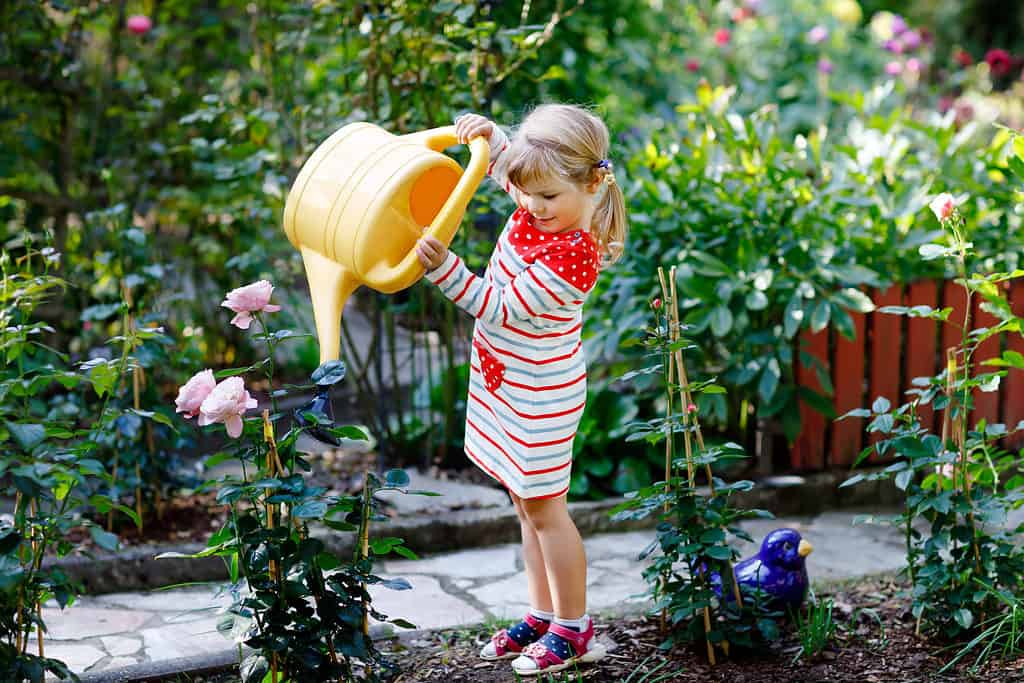
Healthy roses need lots of water, so it’s easy to get the whole family involved!
©iStock.com/romrodinka
Also, while you need to keep watering your roses until the plants go dormant for the winter, you will want to stop the feedings about eight weeks before the first frost is expected in your area. This will ensure you don’t stimulate growth that will be damaged by impending cold weather.
Up Next:
- 11 Types Of Groundcover Roses for Landscaping
- 5 Types Of Climbing Roses and Their Care Needs
- How To Grow Long-Stem Roses
- 10 Types Of Pure White Roses
- Are Roses Toxic To Cats, Actually?
The photo featured at the top of this post is © iStock.com/victorass88
Thank you for reading! Have some feedback for us? Contact the AZ Animals editorial team.






